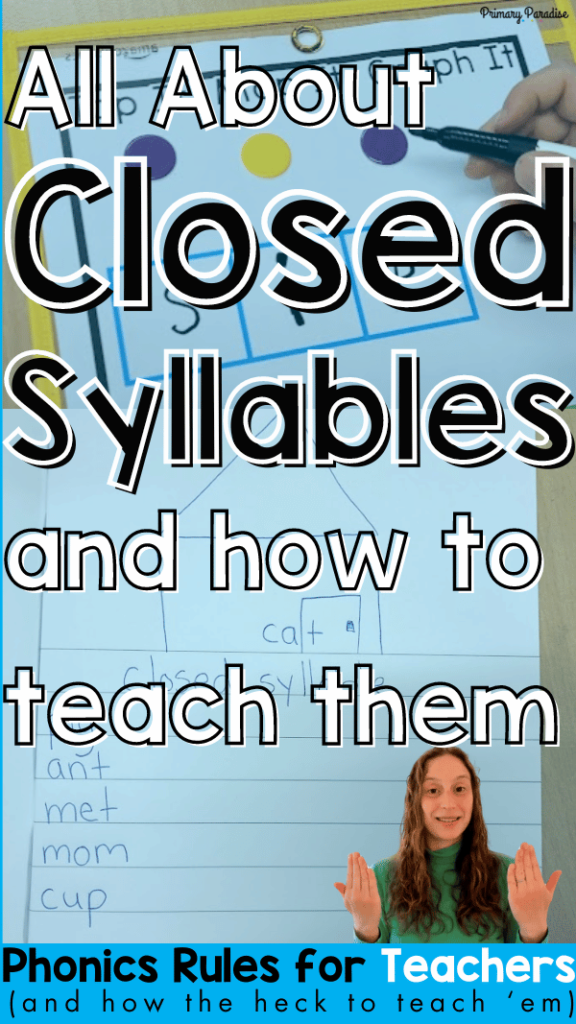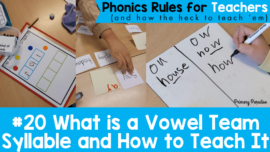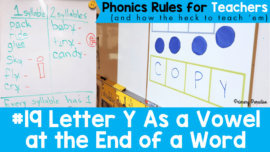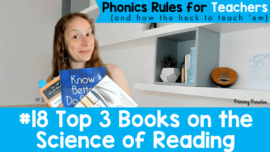Closed syllables are the first syllable type you should teach your students. But, what exactly is a closed syllable, why should you teach closed syllables first, and how can you help your students understand them?
This is post 10 in my series Phonics Rules for Teachers (and How the Heck to Teach ‘Em). If you’d like to see previous posts, you can click here.
Would you rather listen or watch? Find a podcast version of this blog post here, or watch the video below.
An In-depth Look at the Closed Syllable Type
I’ve written about all of the syllable types before (here and here). I’ve even written about how I teach closed syllabled in my classroom here. However, today I’m going to give you a deep dive into the what, how, and why. So, let’s take a look at the closed syllable and see why it’s so important (and why I can’t stop writing about it!).
What IS a closed syllable?
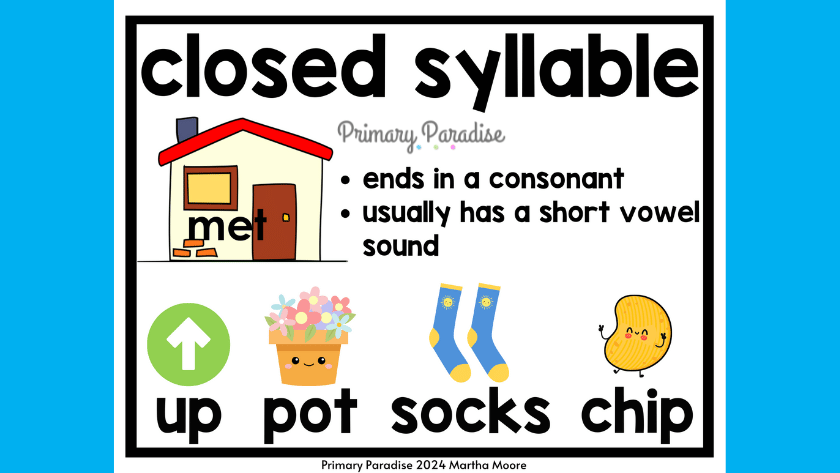
A closed syllable is a syllable that has a single vowel letter (a,e,i,o,u) followed by one or more consonants (Read about consonants and vowels). In a closed syllable, the vowel almost always represents a short vowel sound. (Read about the difference between letters and sounds.)
Closed syllables follow a clear and logical pattern- single vowel letter followed consonant(s). You can quickly determine if a syllable is closed or not by looking for this pattern. If you see two or more vowels in a syllable, a vowel followed by an r, or a vowel at the end of a syllable, it’s not closed. This syllable type makes up about 50% of the syllables in the English language. This is why it’s the best syllable type to teach your students first.
Let’s look at some examples:
Closed Syllable Words
- at
- wed
- pitch
- not
- glum
- scratch
Not Closed Syllable Words
- art
- weed
- peach
- no
- glue
- screech
As you can see, closed syllables can have 2 to 7 letters. But, a closed syllable will always have a single vowel followed by 1, 2, or 3 consonants. CVC words, which are often the first words students read and write, are closed syllable words. (Find a free CVC word list here and CVC practice activities here.)
What about the exceptions to the closed syllable rule?
You might be thinking, “but what about the old wild colt who runs the most in my mind, Martha?” Well, first, I am impressed with your sentence, so good job. Second, those 5 spelling patterns are an exception to the closed syllable rule, but that doesn’t mean that it’s not worthwhile to teach closed syllables.
On the contrary, it just means that we spend some time teaching students about these specific spelling patterns and that they represent long vowel sounds. This is why it’s important to say that closed syllables have a short vowel sound most of the time. It is much easier to teach students the overarching, more common rule, and then spend time teaching the handful of spelling patterns that don’t fit the rule. For a complete list of words for this and other spelling patterns, I suggest the book The ABCs and All Their Tricks (affiliate link).
What should students know before you teach closed syllables?
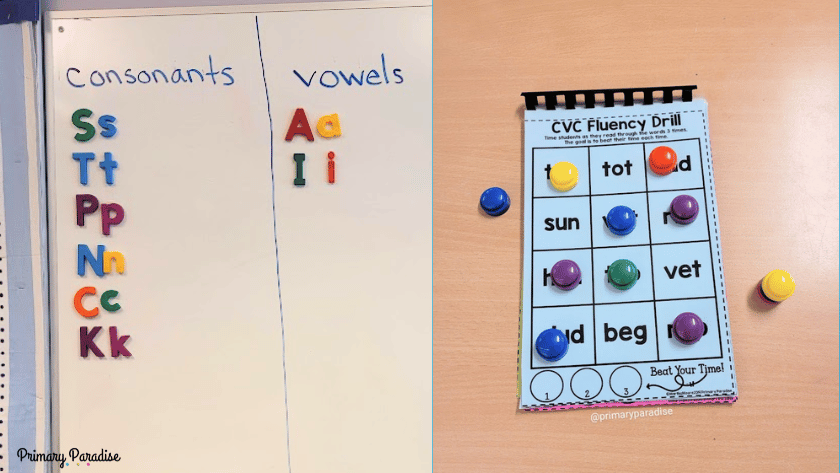
Before you jump into closed syllables, students should already know and be able to do these things:
- understand the difference between letters and sounds
- understand what a vowel sound and a consonant sound is
- be able to hear and count syllables orally in a word
- be able to read and write at least a few consonants and vowels
Once students have mastered these skills, they’re ready to start learning about closed syllables. Even if they only know the sounds for the letters satpin, you could begin to introduce closed syllables with words like at, in, tip, and pat.
How to Teach Closed Syllables in Your Classroom
Use the closed door visual
If you’re following a logical scope and sequence, you can begin to teach closed syllables using a closed door visual. First, if you’ve taught short vowels, your students will know that short vowels are produced with only 1 motion- an opening of the mouth. Now you can explain that most English words end with a closed mouth, and we use a consonant to help us close our mouth.

You can use the visual of a house with a closed door. Write a VC or CVC word (in, sat, or tip for example) on the house, but put the final consonant on the closed door. Explain that closed syllable have a single vowel letter and end with a consonant. (Later on we look at words that end with more than one consonant, but start with only one to keep things simple.)
You can also use hand motions to help students connect their understanding. In my classroom, I like to use this chant. I say it and they repeat it at first.
Closed syllables closed syllables (swing hands like a door closing)
Have one vowel letter have one vowel letter (make a v with your fingers)
End with a consonant end with a consonant (make a c with your hand)
Tell students the facts
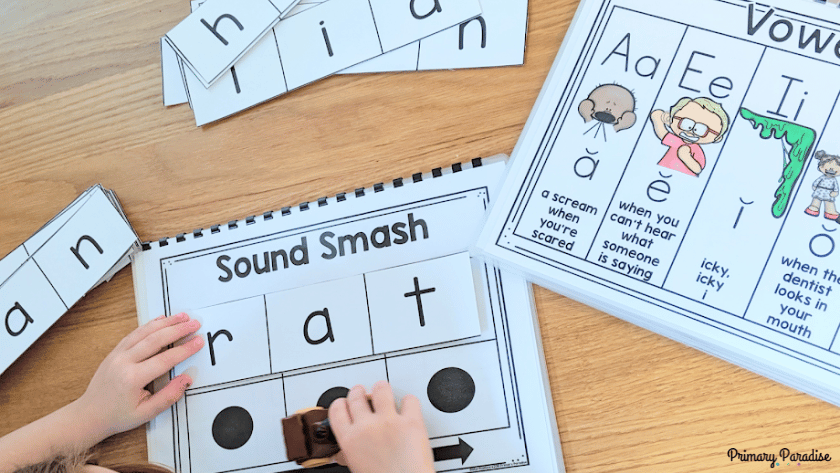
Knowledge is power, so it’s helpful to tell students the facts about close syllables. They will think it’s really cool to know that 50% of syllables in English are closed syllables. When they know that, it will help them feel excited and motivated to recognize, read, and write closed syllable words.
Practice with word mapping
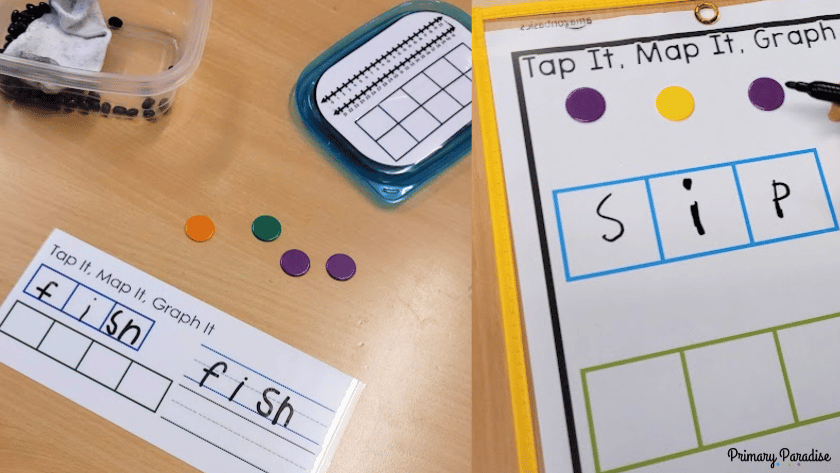
Word mapping is a great way to help students recognize and become familiar with new spelling patterns and syllable types. Have students count out the sounds in a word, put a counter down for each, and then write down the letters for each sound in one box.
Practice with word sorts by vowel sound

The more you can work with words and encourage students to look closely at them, the strong they will become at spotting the closed syllable pattern. A great way to practice working with closed syllable words is to have students sort closed syllable words by vowel sound. If they have learned short a and short i, you can practice sorting and reading VC and CVC words. Be sure to discuss that they are closed syllables as you practice sorting them. This can be a great activity to complete with word cards, or you can say words out loud, have them count the sounds, and then write them on their white boards in the correct column.
Practice with labeling
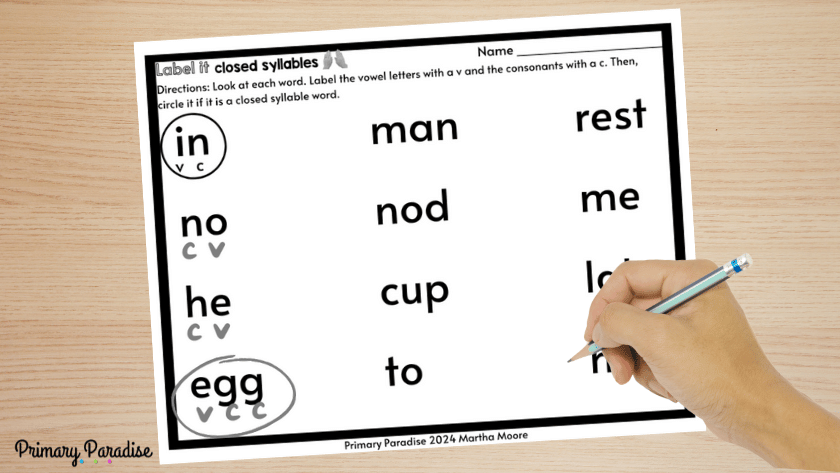
When you’re teaching syllable types, encourage students to look closely at the letters in the words. You can practice this by having students label the consonants and vowels in words and look for the VC (or VCC or VCCC) pattern at the end of closed syllable words. Even if they have only learned closed syllables, they can look and decide if something is or is not a closed syllable. Practice this together before asking students to do it independently.
Closed syllable word hunt in books
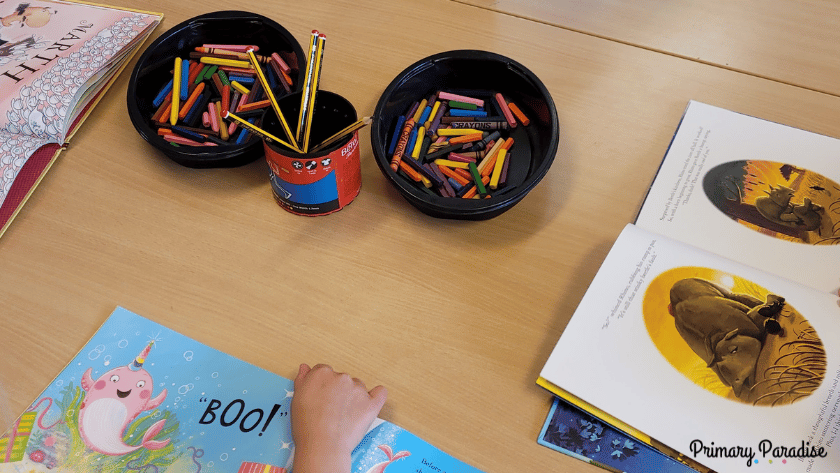
Let students take a book from your classroom library, and have them write down any close syllable words they can find in the book. When they’re done, have students share out the closed syllable words they’ve found, and make a chart together.
If students have written words that aren’t closed syllables, that’s okay. It’s a great opportunity to look closely at the word and talk about why it doesn’t fit the pattern.
Let them be the teacher

One of the best ways to learn is to teach. Once you’ve practiced closed syllables in the class, let your students become the teacher. They can either take the activity home to teach someone at home such as a sibling or a grown up, or you can pair them up with students from another class.
First, let them create a cheat sheet of “teacher notes” to use as they teach. Then, they can explain what a closed syllable is and have their student complete a little practice. Finally, they can check their students’ work and talk to them about how they did. This template is available in the Phonics Rules for Teachers Supplemental Resource here on my website and here on TpT.
Continue to review as you learn new syllable types
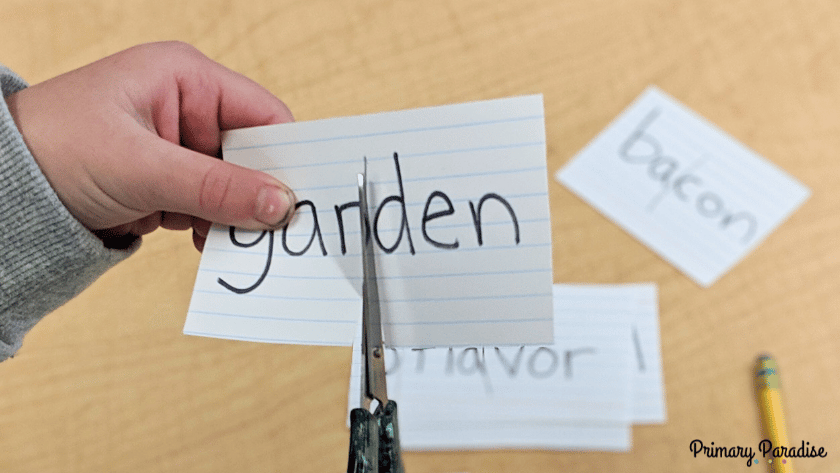
As you learn new syllable types, you should still continuously go back and review closed syllables. When you are constantly using the skill, it becomes just part of one of the tools students can use to decode and encode new words.
Understanding the closed syllable opens up a world of reading and writing possibilities for your students. Ensuring that they fully grasp this skill is a great step in their reading and phonics journey.
